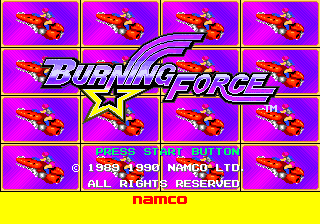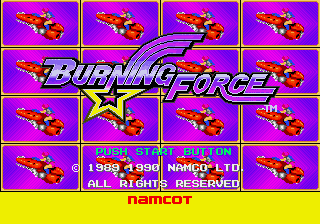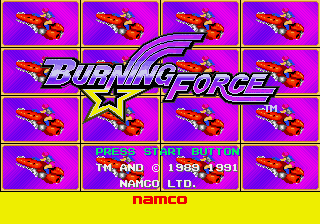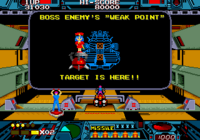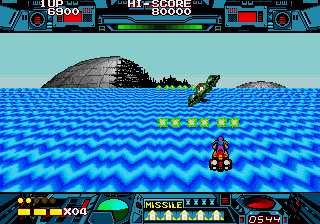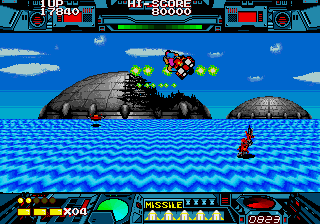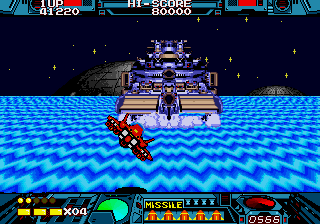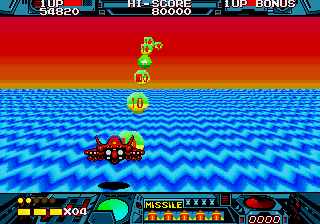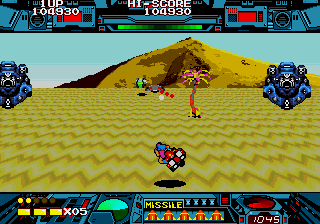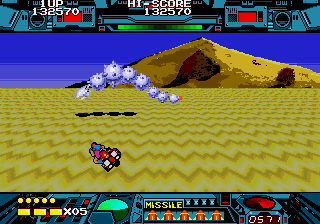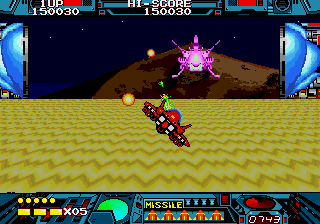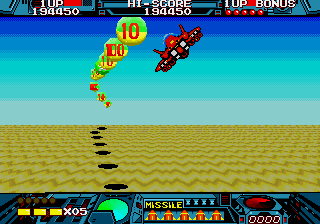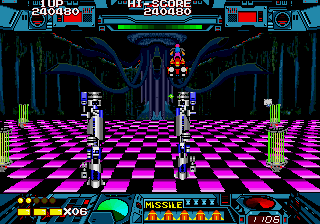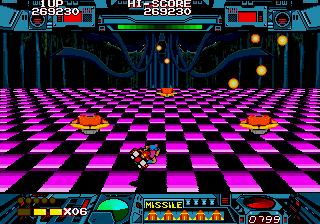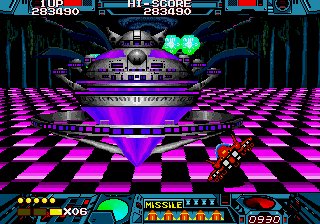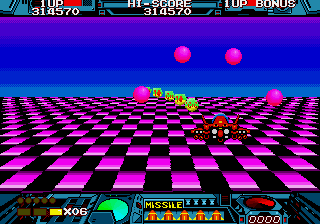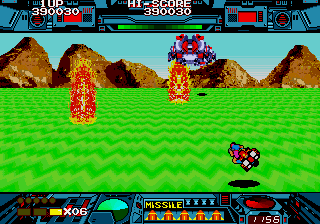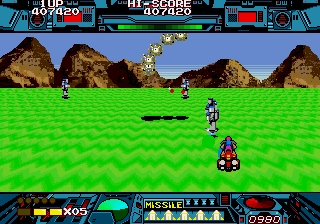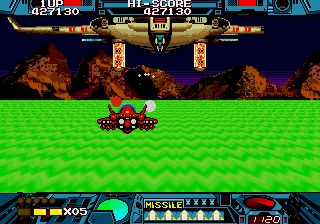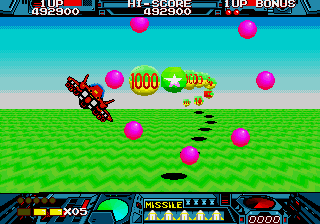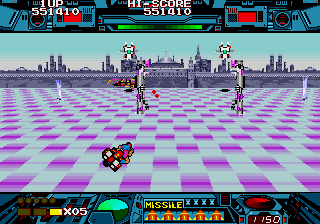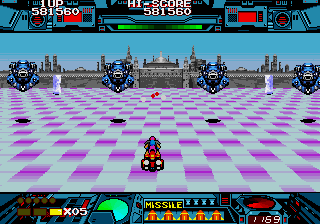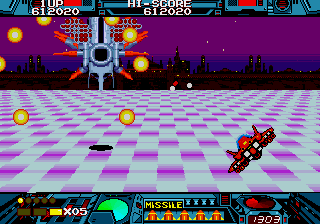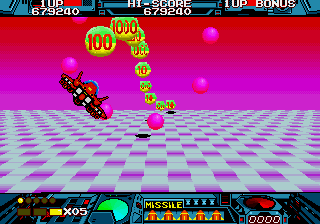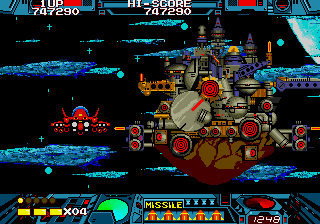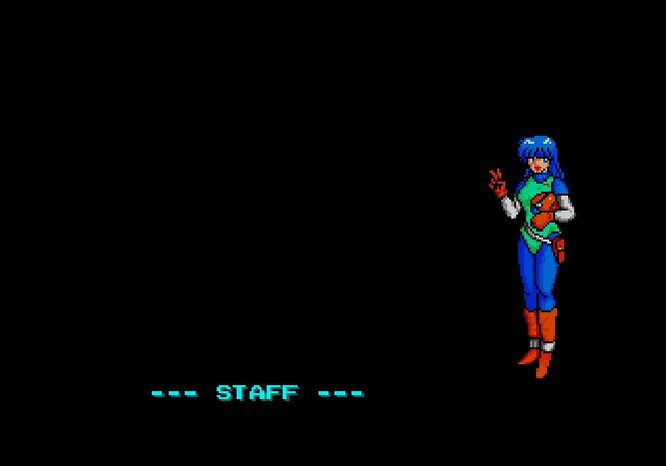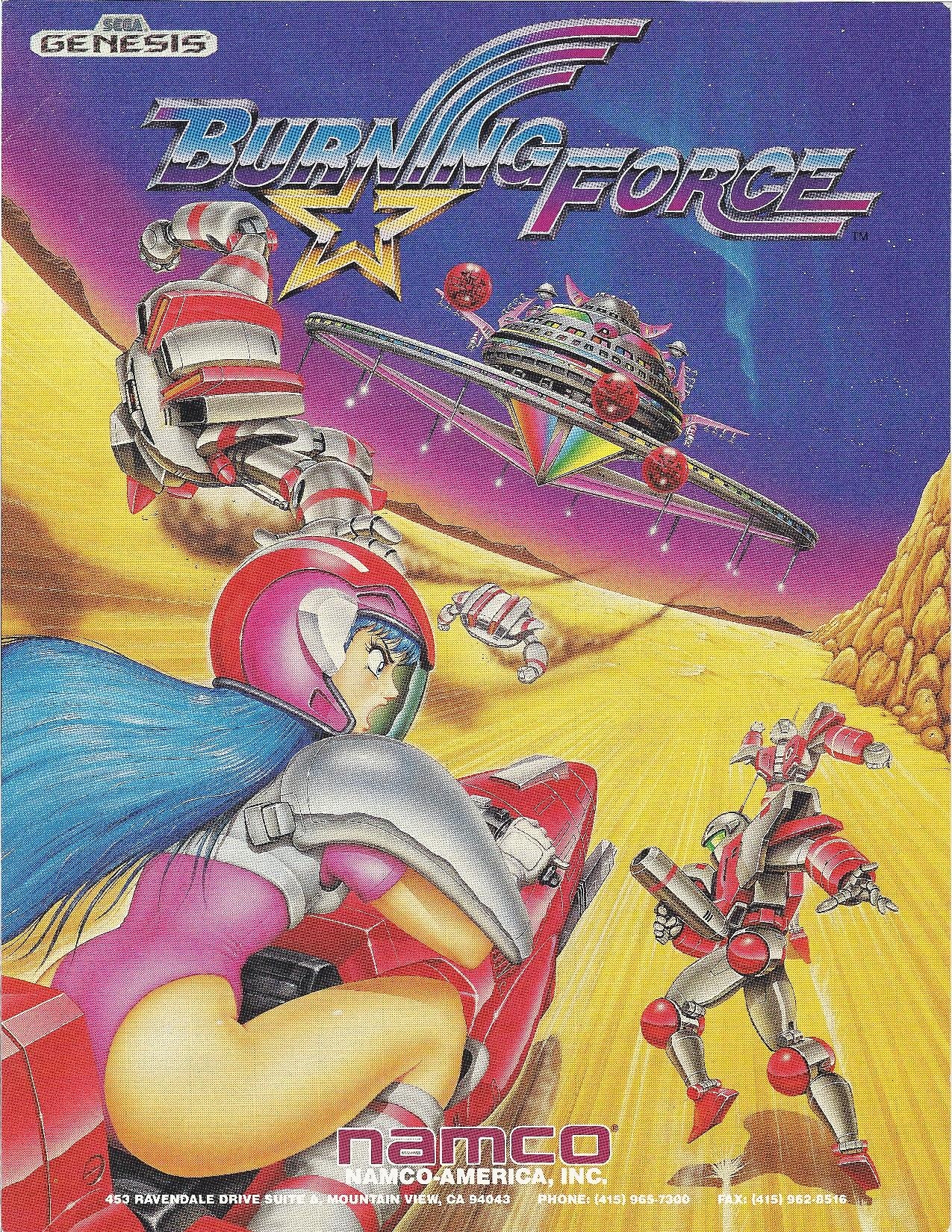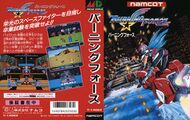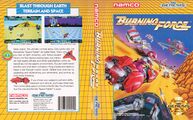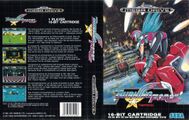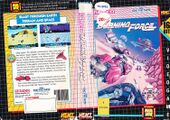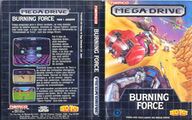Difference between revisions of "Burning Force"
From Sega Retro
(added screenshot) |
m (Text replacement - "==Technical information== ===" to "==Technical information== {{mainArticle|{{PAGENAME}}/Technical information}} ===") |
||
| Line 222: | Line 222: | ||
==Technical information== | ==Technical information== | ||
| + | {{mainArticle|{{PAGENAME}}/Technical information}} | ||
===ROM dump status=== | ===ROM dump status=== | ||
{{romtable| | {{romtable| | ||
Revision as of 01:23, 20 April 2023
| |||||||||||||||||||||||||||||||||||
| Burning Force | |||||||||||||||||||||||||||||||||||
|---|---|---|---|---|---|---|---|---|---|---|---|---|---|---|---|---|---|---|---|---|---|---|---|---|---|---|---|---|---|---|---|---|---|---|---|
| System(s): Sega Mega Drive | |||||||||||||||||||||||||||||||||||
| Publisher: Namco (JP,US) Sega (EU) Tec Toy (BR) | |||||||||||||||||||||||||||||||||||
| Developer: Nova | |||||||||||||||||||||||||||||||||||
| Original system(s): Namco System II | |||||||||||||||||||||||||||||||||||
| Developer(s) of original games: Namco | |||||||||||||||||||||||||||||||||||
| Genre: Shooting[1] | |||||||||||||||||||||||||||||||||||
| Number of players: 1 | |||||||||||||||||||||||||||||||||||
| |||||||||||||||||||||||||||||||||||
|
Burning Force (バーニングフォース) is a Sega Mega Drive third-person vertical shoot-'em-up developed by Nova. A port of the titular 1989 Namco arcade game Burning Force, it was first published in Japan in October 1990 by Namco themselves, and was later brought to the United States, Europe, and Brazil in the following months.
The game is notable for its extensive use of line scrolling to create the illusion of a three-dimensional playfield (in a similar manner to OutRun) and for its lighthearted tone and synth-rock soundtrack. Burning Force was well-received by the gaming public, and is one of the more fondly remembered of Namco's early Sega Mega Drive games.
Contents
Story
Hiromi Tengenji, a 21-year-old cadet at Earth University (or an ensign in the United Galaxy Space Force, UGSF, in the Japanese version), must pass a six-day final examination of fighting enemies over water to become a Space Fighter Pilot. She pilots a futuristic hover bike called the Sign Duck, which can transform into a small fighter craft.
Gameplay
The game is a third-person shooter similar to Space Harrier but with more limited control. The player controls Hiromi on an hover bike that can move with ![]() and
and ![]() . It cannot normally move vertically, but stages contain ramps that can launch the Sign Duck upward (usually to collect power-ups). Holding
. It cannot normally move vertically, but stages contain ramps that can launch the Sign Duck upward (usually to collect power-ups). Holding ![]() speeds up, holding
speeds up, holding ![]() slows down, and letting go returns to normal speed. Hiromi shoots her normal weapon with
slows down, and letting go returns to normal speed. Hiromi shoots her normal weapon with ![]() , which has unlimited ammunition and can be held for continuous fire, or missiles with
, which has unlimited ammunition and can be held for continuous fire, or missiles with ![]() , which are limited in supply. Hiromi can find power-ups in the stages that upgrade her standard weapon and missiles.
, which are limited in supply. Hiromi can find power-ups in the stages that upgrade her standard weapon and missiles.
Though Hiromi can only sustain one hit before being destroyed in the arcade version, she has three hit points in this version and loses one each time she takes damage from an enemy. Running into obstacles generally knocks her back or slows her down rather than damaging her. If she loses all of her hit points, she loses a life (as well as any weapon upgrades she may have); the game ends if she runs out of lives. The player can continue the game from any stage up to the most recent one played as long as there are credits remaining. Extra lives are given at certain score thresholds. If Hiromi collects green orbs in the stages, she can exchange five of them for temporary invincibility by pressing ![]() . Hit points and green orbs are retained between stages.
. Hit points and green orbs are retained between stages.
Each stage represents one day in Hiromi's final examination. Each day is divided into four areas. Areas 1 and 2 are normal shooting areas on an airbike that can only move left and right. Area 3 is a boss area in which the airbike is transformed into a plane with the same controls but with added vertical mobility with ![]() and
and ![]() . This area is preceded by an interlude where Miss Kyoko, Hiromi's instructor, identifies the weak points of the boss. Area 4 is a bonus round in the plane where the goal is to collect as many points and power-ups as possible.
. This area is preceded by an interlude where Miss Kyoko, Hiromi's instructor, identifies the weak points of the boss. Area 4 is a bonus round in the plane where the goal is to collect as many points and power-ups as possible.
Items
Bullets
| Laser | |
|---|---|
| Changes the player's primary weapon into a high-damage laser. | |
| Wide Range | |
| Changes the player's primary weapon into a wide row of pellets. | |
| Cross Laser | |
| Changes the player's primary weapon into a helical beam that is wider and more powerful than the standard shot. |
Missiles
| Homing Missile | |
|---|---|
| Changes the player's missile weapon to a volley of homing missiles that seek out enemy targets. | |
| Max Missile | |
| Changes the player's missile weapon to a single devastating missile that explodes into a ring of expanding fireballs. |
Other
Stages
| 1st Day: Bay Yard | |
|---|---|
| 2nd Day: Sahara Sands | |
| 3rd Day: Aero Space | |
| 4th Day: Meadow | |
| 5th Day: Another World | |
| 6th Day: Lunar Spaceport | |
| The final day is a single segment played solely in the plane with a boss fight at the end. |
History
In the time of its release, an unfortunately common misconception among video game marketers was that games which star women sell more poorly than those which star men. When brought to the United States by Sega of America, the company made a number of attempts to conceal the game's female protagonist from the game's packaging and manual. New cover artwork was commissioned, this time showing Burning Force being played from the perspective of another character entirely[6] (while still managing to work Hiromi into the artwork, now seemingly being attacked by players), and the game's manual was carefully reworded to assure gamers they were not playing as a woman.[7][8] Instead, Burning Force now puts players in control of a separate, nameless protagonist who is training alongside Hiromi[7] and directly "guiding" her through the tests during gameplay.[8][6]
Production credits
- Game Program: Ogawann
- Sub Program: Kobakun
- Sound Program: Kwaeru
- Story by: Makotomas
- Charactor Designers: Kuma, 7852
- Sound Designers: Noririn
- Constructive Manager: Koh
- Total Coordinate: Gen
- Special Thanks: Big Gan, Kero, Udauda
- Directed by: Makotomas
- Cover artist: Takashi Akaishizawa
Magazine articles
- Main article: Burning Force/Magazine articles.
Promotional material
Physical scans
| 59 | |
|---|---|
| Based on 32 reviews | |
Technical information
- Main article: Burning Force/Technical information.
ROM dump status
| System | Hash | Size | Build Date | Source | Comments | |||||||||
|---|---|---|---|---|---|---|---|---|---|---|---|---|---|---|
| ✔ |
|
512kB | 1990-10 | Cartridge (US) | ||||||||||
| ✔ |
|
512kB | 1990-10 | Cartridge (EU) | ||||||||||
| ✔ |
|
512kB | 1990-10 | Cartridge (JP) |
References
- ↑ 1.0 1.1 https://sega.jp/history/hard/megadrive/software_l.html (Wayback Machine: 2020-07-02 23:21)
- ↑ https://groups.google.com/g/rec.games.video/c/yWklh_du7Ik/m/sTDr7WmQ5vcJ
- ↑ 3.0 3.1 VideoGames & Computer Entertainment, "February 1991" (US; 1991-0x-xx), page 52
- ↑ 4.0 4.1 4.2 Sega Power, "January 1992" (UK; 1991-12-05), page 10
- ↑ Supergame, "Setembro 1991" (BR; 1991-09-xx), page 37
- ↑ 6.0 6.1 File:BurningForce MD US Box.jpg
- ↑ 7.0 7.1 File:Burningforce md us manual.pdf, page 3
- ↑ 8.0 8.1 File:Burningforce md us manual.pdf, page 5
- ↑ File:Burning Force MD credits.pdf
- ↑ 1700 igr dlya Sega, "" (RU; 2001-xx-xx), page 40
- ↑ ACE, "January 1991" (UK; 1990-12-xx), page 104
- ↑ Ação Games, "Setembro 1991" (BR; 1991-09-xx), page 24
- ↑ Beep! MegaDrive, "November 1990" (JP; 1990-10-XX), page 23
- ↑ Complete Guide to Consoles, "Volume IV" (UK; 1990-11-xx), page 28
- ↑ The Complete Guide to Sega, "" (UK; 1991-05-xx), page 45
- ↑ Cool Gamer, "9" (RU; 2002-10-13), page 44
- ↑ Entsiklopediya luchshikh igr Sega. Vypusk 1, "" (RU; 1999-xx-xx), page 299
- ↑ Famitsu, "" (JP; 1990-1x-xx), page 1
- ↑ Famicom Hisshoubon, "1990-20, 21 (1990-10-19, 11-02)" (JP; 1990-10-05), page 17
- ↑ Hobby Consolas, "Mayo 1992" (ES; 1992-0x-xx), page 72
- ↑ Joypad, "Avril 1992" (FR; 1992-03-1x), page 138
- ↑ Joystick, "Décembre 1990" (FR; 1990-1x-xx), page 119
- ↑ Sega Mega Drive Advanced Gaming, "January 1993" (UK; 199x-xx-xx), page 90
- ↑ Mega Drive Fan, "January 1991" (JP; 1990-12-08), page 87
- ↑ Mega, "February 1994" (UK; 1994-01-20), page 65
- ↑ Mega Force, "Janvier 1992" (FR; 1992-01-15), page 99
- ↑ Mega Play, "February 1991" (US; 199x-xx-xx), page 44
- ↑ MegaTech, "Xmas 1991" (UK; 1991-12-06), page 76
- ↑ Micromanía (segunda época), "Septiembre 1992" (ES; 1992-0x-xx), page 85
- ↑ Mean Machines Sega, "October 1992" (UK; 1992-09-xx), page 137
- ↑ Player One, "Janvier 1992" (FR; 199x-xx-xx), page 90
- ↑ Play Time, "5/92" (DE; 1992-04-08), page 92
- ↑ Power Play, "1/91" (DE; 1990-12-14), page 183
- ↑ Raze, "January 1991" (UK; 1990-11-29), page 71
- ↑ Sega Power, "October 1991" (UK; 1991-09-05), page 53
- ↑ Sega Power, "February 1992" (UK; 1992-01-02), page 36
- ↑ Sega Pro, "April 1993" (UK; 1993-03-11), page 64
- ↑ Sega Saturn Magazine, "September 1995" (JP; 1995-08-08), page 87
- ↑ Top Secret, "Kwiecień 1995" (PL; 1995-xx-xx), page 57
- ↑ Tricks 16 bit, "Tricks Sega Gold 800 igr" (RU; 1998-03-20), page 33
| Burning Force | |
|---|---|
|
Main page | Comparisons | Hidden content | Development | Magazine articles | Reception | Region coding | Technical information | Bootlegs | |
- 1 player games
- JP Mega Drive games
- All JP games
- US Mega Drive games
- All US games
- EU Mega Drive games
- All EU games
- UK Mega Drive games
- All UK games
- SE Mega Drive games
- All SE games
- BR Mega Drive games
- All BR games
- Mega Drive games
- 1990 Mega Drive games
- All 1990 games
- Mega Drive shoot-'em-up games
- All shoot-'em-up games
- All games
- Credits without reference
- Old technical information
- Burning Force
